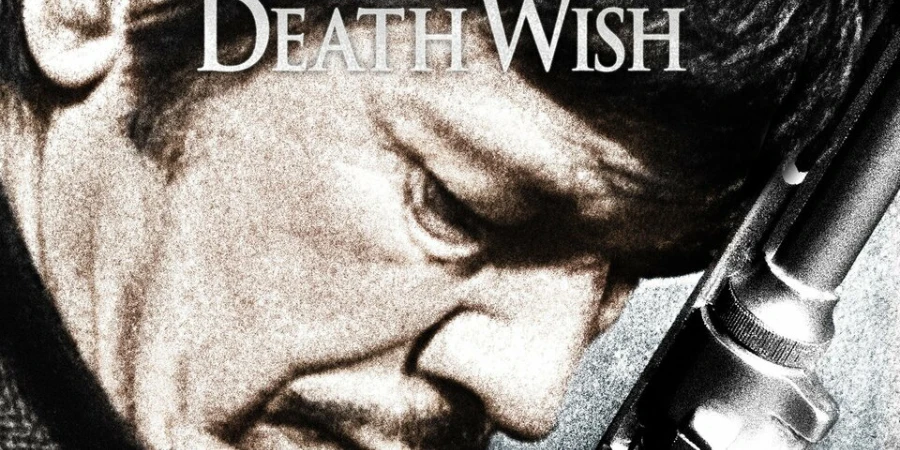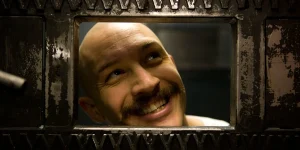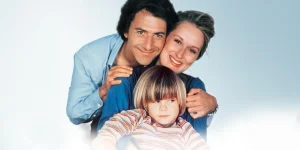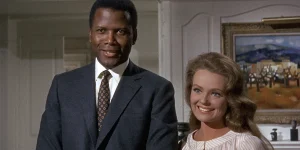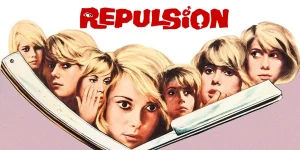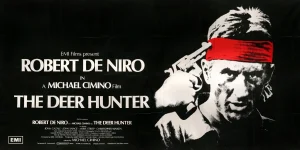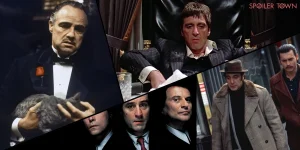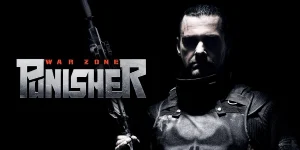Death Wish (1974), directed by Michael Winner, is a gritty vigilante thriller that sparked controversy and conversation upon release—and helped define a new subgenre of revenge-driven crime dramas. The film stars Charles Bronson in a career-defining role and tackles themes like urban decay, justice, and personal morality. Here’s an in-depth exploration of the film and everything surrounding it.
Table of Contents
ToggleDetailed Summary
Opening: Life Before the Tragedy
Paul Kersey (Charles Bronson) is a mild-mannered New York architect living a quiet, content life with his wife Joanna and daughter Carol. He is a Korean War vet, but now he’s a pacifist, with no desire for violence. Early scenes show his family dynamic and his liberal-leaning ideology. Kersey is established as a thoughtful, rational man—until his life is torn apart.
The Home Invasion
Everything changes when three muggers (one of them played by a young Jeff Goldblum) follow Joanna and Carol home. In a harrowing and violent scene, Joanna is brutally attacked and killed, and Carol is left in a catatonic state from the trauma. This is the emotional and thematic turning point of the film, marking the birth of Kersey’s transformation.
Grief and Frustration
The legal system fails to deliver justice. The police, overwhelmed by the crime rate, are ineffective. Kersey grows increasingly frustrated, especially after learning that the chances of finding the culprits are slim to none. He travels to Arizona for work, where he encounters a different culture—one that openly embraces guns and self-reliance.
Birth of a Vigilante
After returning to New York, Kersey is mugged but defends himself using a sock full of coins. This event ignites something inside him. Soon after, he receives a revolver as a gift from a colleague in Arizona. Armed and increasingly disillusioned, Kersey begins patrolling the streets at night, baiting muggers and executing them with cold efficiency.
As his vigilante acts become more frequent, he gains media attention. New York becomes both fascinated and divided by the mysterious killer cleaning up the streets. Crime rates begin to drop, and public opinion is oddly favorable toward the unknown vigilante, though the police and politicians see him as a dangerous liability.
Cat-and-Mouse with the Police
Detective Frank Ochoa (Vincent Gardenia) is assigned to the case. While he uncovers that Kersey is the vigilante, he’s pressured not to arrest him. The police want to stop the killings but fear a public backlash if they make him a martyr. The mayor even instructs Ochoa to “encourage” Kersey to leave town rather than bring him to justice.
Movie Ending
In the final act, Kersey is wounded during one of his nightly hunts and is taken to the hospital. The police now have clear evidence of his actions but decide not to prosecute. Instead, they offer him a deal: leave New York and never return, or face public exposure and criminal charges.
Kersey agrees and relocates to Chicago. In the film’s chilling final scene, as he arrives at the train station, he sees a group of punks harassing a woman. He smiles, points a finger at them like a gun, and goes on his way—suggesting that the vigilante spirit lives on, and his war on crime is far from over.
Are There Post-Credits Scenes?
No, Death Wish (1974) does not have a post-credits scene. The film ends with Kersey’s silent gesture in Chicago, which itself acts as a thematic closing note.
Type of Movie
Death Wish is a crime thriller and vigilante drama, often considered part of the revenge subgenre. It leans heavily into themes of urban crime, morality, and individual justice.
Cast
- Charles Bronson as Paul Kersey
- Hope Lange as Joanna Kersey
- Vincent Gardenia as Detective Frank Ochoa
- Steven Keats as Jack Toby
- William Redfield as Sam Kreutzer
- Jeff Goldblum as Freak #1 (his film debut)
Film Music and Composer
The film’s score was composed by Herbie Hancock, who brought a jazz-funk style to the soundtrack that contrasts the grim tone of the film. The music plays a strange but fascinating role, adding an almost surreal tension to scenes of violence and stalking.
Filming Locations
Death Wish was filmed in:
- New York City – Most of the movie was shot on location in Manhattan, the Bronx, and other neighborhoods. The deteriorating urban landscape of the 1970s is a character in itself, reflecting the chaos and lawlessness that pushes Kersey over the edge.
- Tucson, Arizona – Used during Kersey’s trip to show the cultural contrast between New York’s lawlessness and Arizona’s gun culture.
The film uses real city streets to amplify its gritty realism. The dirty subways, poorly lit alleys, and run-down apartments feel authentic and claustrophobic.
Awards and Nominations
Death Wish was a commercial success but did not receive major awards. It was nominated for:
- Golden Globe: Vincent Gardenia for Best Supporting Actor (nomination only)
- The film sparked critical debate more than accolades, with many reviewers divided over its moral stance.
Behind the Scenes Insights
- Charles Bronson reportedly disliked the message of the film, stating he did not believe in vigilante justice.
- Jeff Goldblum’s role as a rapist was his first movie appearance.
- Director Michael Winner deliberately chose real urban decay locations to intensify the film’s impact.
- The film was heavily censored or banned in several countries due to its graphic violence and controversial message.
- Bronson was not the first choice; actors like Jack Lemmon and Henry Fonda were approached and declined due to the script’s content.
Inspirations and References
- Based on the 1972 novel Death Wish by Brian Garfield.
- The book is more morally complex and critical of vigilantism. Garfield was unhappy with the film adaptation, claiming it glorified what the book condemned.
- Influenced by the rising crime rates and social anxiety in 1970s America.
Alternate Endings and Deleted Scenes
There are no widely released alternate endings, but early drafts of the script were darker and more introspective, showing more of Kersey’s psychological breakdown. Some minor scenes were trimmed for pacing, especially sequences where Kersey reflects on his transformation.
Book Adaptations and Differences
- The novel is more critical of Paul Kersey’s actions.
- In the book, Kersey descends into madness, and the narrative condemns his vigilantism as morally bankrupt.
- The movie, in contrast, treats Kersey more like an antihero and implies public support for his actions, even painting him as a necessary evil.
Memorable Scenes and Quotes
Key Scenes
- The home invasion scene—brutal, shocking, and the catalyst for everything.
- Kersey’s first kill in the park—a moment of fear and adrenaline that transforms him.
- The confrontation between Kersey and Detective Ochoa.
- Final scene in Chicago—Kersey’s symbolic gesture suggesting he’s not done.
Iconic Quotes
- “If the police don’t defend us, maybe we ought to do it ourselves.”
- “My wife is dead. My daughter is raped. And somebody has to do something about it.”
- “Nothing to do but cut and run. But where do you go when you’re running from yourself?”
Easter Eggs and Hidden Details
- The apartment interiors were purposely dim and claustrophobic to enhance the tension and sense of entrapment.
- Kersey’s revolver is a Colt Police Positive, symbolizing his shift from victim to self-appointed enforcer.
- The “Freaks” (muggers) are deliberately nameless, representing faceless urban evil rather than individual villains.
Trivia
- The film launched a five-movie franchise, with sequels becoming increasingly action-oriented.
- It inspired real-life vigilante discussions in major newspapers and TV shows.
- The 2018 remake starred Bruce Willis but received mostly negative reviews.
- Director Michael Winner received hate mail and praise in equal measure.
Why Watch?
Death Wish remains a gripping exploration of justice, trauma, and how far a man can go when pushed beyond his limits. It’s controversial, raw, and morally complex—a must-see for fans of crime dramas and urban thrillers. Even if you don’t agree with Kersey’s actions, the film forces you to confront uncomfortable questions about justice and society.
Director’s Other Movies
- The Mechanic (1972)
- The Big Sleep (1978)
- The Sentinel (1977)
- Death Wish II (1982)
Recommended Films for Fans
- John Wick (2014)
- Taxi Driver (1976)
- Dirty Harry (1971)
- Man on Fire (2004)
- The Equalizer (2014)
- Rolling Thunder (1977)
- The Brave One (2007)
- Gran Torino (2008)

